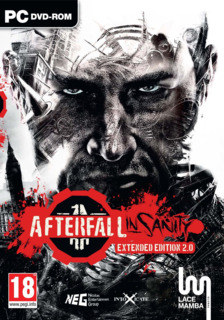Parasomnia: Dr. Tokaj is a 34-year-old narcoleptic shrink who frequently falls into sleep during the sessions with his patients. In a setting hardly to distinguish from daily reality, he then fancies dreams of the Stalin-mustached Colonel Henryk Potocki, unloved Head of the Shelter he and other lucky survivors of World War III are confined to since about twenty years. The year is 2035, and what his unstable patients tell him during the psychiatrist sessions is probably as fatiguing as the oppressive situation on “Glory” itself, a claustrophobic nightmare rather than a cozy safety haven.
From the story's dystopian turn of events one might easily tell that Afterfall: InSanity has been developed by a team seated in an ex-totalitarian country like Poland (Intoxicate Studios), yet presupposing an alternative History in which it was Nazi Germany that had the first atomic bomb, the “Wunderwaffe,” leading to a truce instead of a defeat at the end of WWII. It was again Germany that in 2011 let a newer nuclear prototype, the “Entropy,” explode above the English Channel, the automated missile reaction to which provoked the devastating Third World War: the surface becomes inhabitable.
So far for the Fallout-like setting: unfortunately also the wooden, amateurish voice acting reminding of a badly synchronized movie (if not of a soliloquizing doctor recording his medical audio diary) may denote Afterfall's Eastern-European provenance, as well as the awkward gameplay mechanics and unpolished action controls (keyboard).
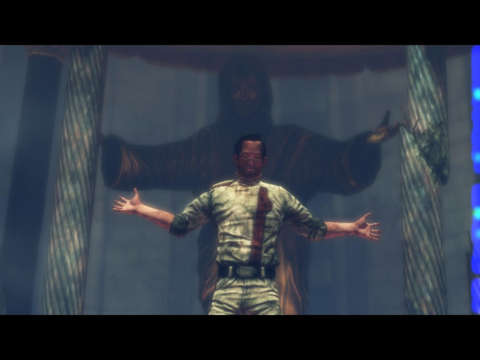
Still, after an extremely dry opening the game's Orwellian setting and psychological horror action becomes sufficiently preoccupying to make the player strive forward in spite of its mechanical flaws, just like Albert Tokaj—at once playable hero and reprehensible suspect—himself.
Concluding the prologue and prefacing the epilogue, it is a Church or Cathedral's scene which shows Potocki pretentiously juxtaposed to a Christ statue, and the Christ to the mysterious saboteur, exposing Tokaj to an inconvenient truth: sacrifices are to be made, and the ones to be sacrificed are those that think too much in an indefinite state of emergency (“Sheltered Life”).
Within this narrative frame the action is roughly structured in three parts, that is 27 chapters over 10 levels of (mental) disorder: first, the Shelter's underground tunnels infested with humans-turned-mutants, victims somehow of the “Confinement Syndrome” Tokaj himself is specialized in. The repetitive action of increasingly aggressively slaying increasingly aggressive mutants by means of all sorts of spiky weapons (Pacyfikator, Sickle, Axe, Syringe) is alternated by occasional, usually not too demanding hacking minigames—doors, fuses, and valves—some of which are hampered by a timeout. Learning of the existence of another potential shelter, fittingly named “Fist” (“Law of the Fist”), Tokaj finally manages to escape on a train wagon, but without his Glory girlfriend Karolina reluctantly left behind, and reaches a surface city that he didn't even imagine could still exist.
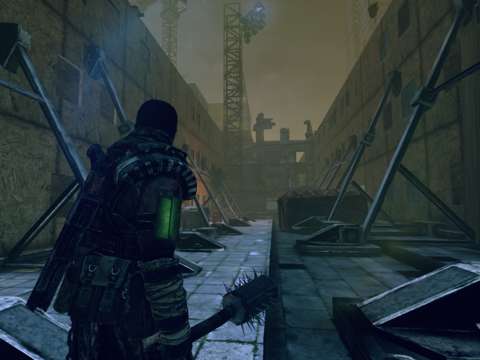
Alas, whilst part of the city seems fake like on a movie set (“Backstage of Glory”), it is inhabited by barbarized humans and cannibals seemingly not interested in his presence, if not to throw him into an arena like in a Gladiator fight. —The same scene later serves for the Dirty Arena challenges unlocked upon completing the campaign in the Extended Edition.— Machine and shotgun plus (replenishable) ammunition at last come in handy here as well as in the following bossfight against a scary scrapmetal monster which marks the entry to the City of Light, the setting of the third part. Light exposure becomes lethal now and hysteric ghosts are starting to haunt Albert, while occasional environment puzzles permit creating the necessary make-do cover and finding some well-dosed ammo.
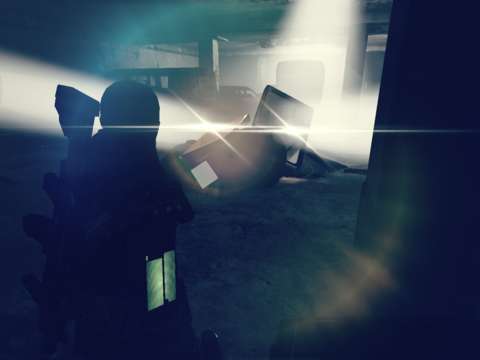
Once outside the dimly lit standard underground corridors the graphical setting becomes pretty realistic and far better than average, in particular as to the remains of the devastated surface city, and blinding light beams suggest the post-nuclear sun's unmerciful effects.
Whereas imperishable melee weapons suit well their purpose during the first half of the game, firearms become indispensable against brutes, shades, and bosses in the second one, and since equipped only temporarily and automatically dropped when switching to an inventoried gun, are also more difficult to locate (so if one didn't already complete the “Hack n' Slash” sickle kill achievement while in the Shelter, it gets almost impossible later on).
The third bossfight lets one finally confront the ubiquitous saboteur in an electricity coil puzzle, but with Dr. Tokaj early on accused by the Colonel of undermining Glory, is this evil guy not also a mirror of himself? And initially diagnosed as strange “behavioral problem,” are the mutants not also mirroring his proper unruly aggressive demeanor? In the end it seems he has been framed right from the begin, in an Alan Wake-like way—the drowsy session, the realistic dream, the office call, Karolina, the Shelter incident...—, yet with “Stress Relief Through Violence” as the saboteur's reiterated motto, isn't it the tranquil soul doctor's (as well as the player's) committing to extremely brutal action the framing actually consists in? Winning the last boss or not, eventually it is the totalitarian truth that prevails and for which dissident elements are to be eliminated or substituted: no one is innocent.
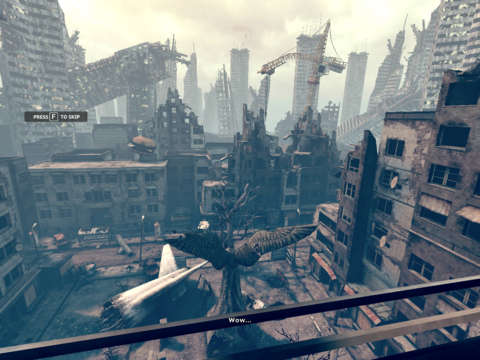
If there is something that drives one forward in this horror adventure, apart from the cryptic story itself, it is the asphyxiant atmosphere, to which visuals and music contribute in a creative manner: while creepy only for the Shelter's dim tunnels where dual-wielding monsters are lurking behind every door, the surface city's ruins—lifeless buildings, leafless trees, meaningless neon facades—give a sober picture of the desolation of a post-atomic, post-human future torn between anarchy and autarchy (“Edge of Humanity”).
The great soundtrack alternating between melancholic (“Dies Irae”), suspense-laden, and danger-suggesting musical themes (Marcin Przybyłowicz, Arkadiusz Reikowski, OST included in the Extended Edition) illustrate well Albert Tokaj's delusional isolation while facing the very rest of humanity: “Lies, everyone is lying, everything is a lie.”
While the original game was developed for 32-bit DX9, it has some rendering problems when playing it 64-bit in the later chapters (City of Light), to which might be added the protagonist's rather stiff movements and combat moves: the stamina while running and fighting is easily exhausted, though quickly regained afterward along with the health. However, while melee combat often appears recurrent and not too well-executed, there is still a solid physical feel gotten from every hammer and sickle slash, and dismembering bodies and smashing enemy heads using the finishers soon justifies Shelter “Gory”'s name.
Afterfall: InSanity might not be the best game of the psycho-horror-survival genre, but its atmospheric music and realistic visuals rounding out a thoughtful storyline make it still worth being played, supplementary arena challenges included.
